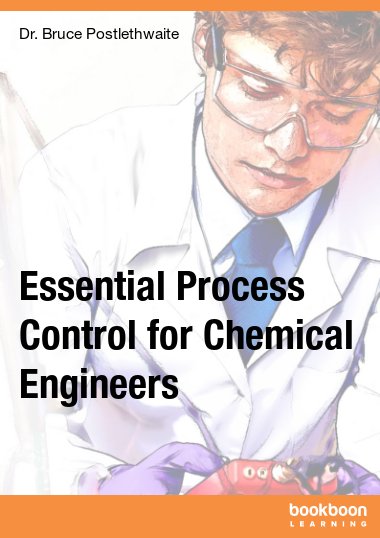- Introduction
- Why do we need control?
- Instrumentation
- What is an instrument?
- Factors to be considered in selecting an instrument
- Instruments for temperature measurement
- Pressure measurement
- Flow measurement
- Level measurement
- Chemical composition
- Communication signals
- Types of communication signal
- Final control elements
- Control valves
- Control valve sizing
- Diagrams for process control systems
- Process flow diagrams (PFDs)
- Piping and instrumentation diagrams (P&IDs)
- Inputs and outputs in control systems
- Process inputs
- Process outputs
- Processes in control engineering
- An example of variables and processes
- Introduction to feedback control
- Feedback control and block diagrams
- Positive and negative feedback
- Control loop problems
- Direction of control action
- Controller hardware
- Introduction to steady-state and dynamic response
- Steady-state gain
- Dynamic response
- Dynamic modelling
- Laplace transforms
- Derivation of basic transforms
- Solution of differential equations using Laplace transforms
- Transfer functions
- Block Diagrams
- Block diagram algebra
- Solutions of responses for high-order systems
- Forming dynamic models
- Analytical solution of real world models
- Types of non-linearity
- Linearisation of non-linear equations
- Simplifying expressions through deviation variables
- Procedure for simplifying and solving a non-linear model
- Putting it all together – a reactant balance for a CSTR
- PID Controller algorithm
- Really simple feedback controller – on-off
- Proportional-integral-derivative (PID) control
- Proportional only control
- Integral only control
- Derivative action
- Proportional-Intergral (PI) control
- PID control response
- Other forms of PID algorithm
- Control system analysis
- Analysis of a typical feedback control system
- The PID algorithm as a transfer function
- Analysis of proportional control of a first-order process
- Example of a first order process under proportional control
- Example of a second-order process under proportional control
- Analysis of integral control of a first-order process
- Controller tuning
- What needs to be done to tune a PID Controller?
- How do you decide what is a good controller performance?
- Some methods of controller tuning
- Control loop health monitoring
- Control loop diagnostics
- More advanced single-loop control arrangements
- Cascade control
- Selective or autioneering control
- Override control
- Ratio control
- Feedforward control
- Design of control systems
- Control envelope
- Multivariable processes
- How to determine the number of controlled variables
- Plantwide mass balance control
- Control system architecture
- The effect of technology on process plant control rooms
- Human factors in control room displays
- Distributed control systems
- Safety Instrumented Systems

This book covers almost all of the process control material required to meet the IChemE’s recommended syllabus for a general career in chemical engineering. The first section is on instrumentation, including control valves and plant communications. Several chapters then descibe P&I diagrams, the concept of feedback control and introduce the main types of simple dynamic response that can be seen in chemical plant. The next section of the book is concerned with analysis and covers dynamic modelling, the PID algorithm, control system analysis and controller tuning. The last three chapters look at more advanced single loop control, control system design and control system architecture. The book is based on class notes that have been developed over the past four years and has benefited from lots of useful student feedback.